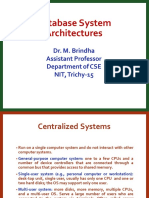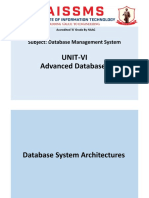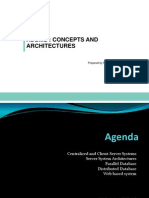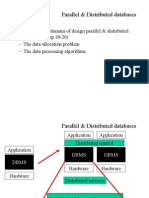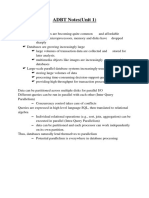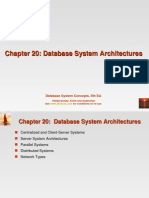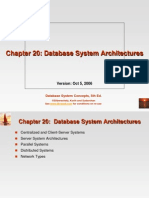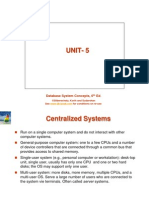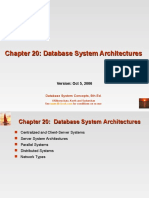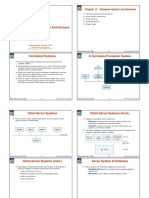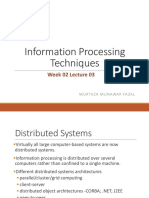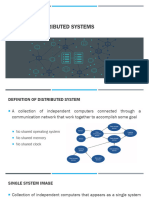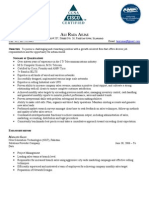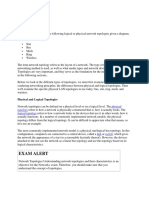0% found this document useful (0 votes)
31 views41 pagesSlide 4
The document discusses different database system architectures including centralized, server-based, parallel, and distributed systems. It describes the components and processes involved in transaction server systems as well as data server/storage systems. Key aspects of parallel database systems like speedup, scaleup, and factors limiting performance are covered. Different interconnection network architectures like bus, mesh, hypercube, and tree-like topologies used in parallel databases are also summarized.
Uploaded by
dejenedagime999Copyright
© © All Rights Reserved
We take content rights seriously. If you suspect this is your content, claim it here.
Available Formats
Download as PDF, TXT or read online on Scribd
0% found this document useful (0 votes)
31 views41 pagesSlide 4
The document discusses different database system architectures including centralized, server-based, parallel, and distributed systems. It describes the components and processes involved in transaction server systems as well as data server/storage systems. Key aspects of parallel database systems like speedup, scaleup, and factors limiting performance are covered. Different interconnection network architectures like bus, mesh, hypercube, and tree-like topologies used in parallel databases are also summarized.
Uploaded by
dejenedagime999Copyright
© © All Rights Reserved
We take content rights seriously. If you suspect this is your content, claim it here.
Available Formats
Download as PDF, TXT or read online on Scribd
/ 41


